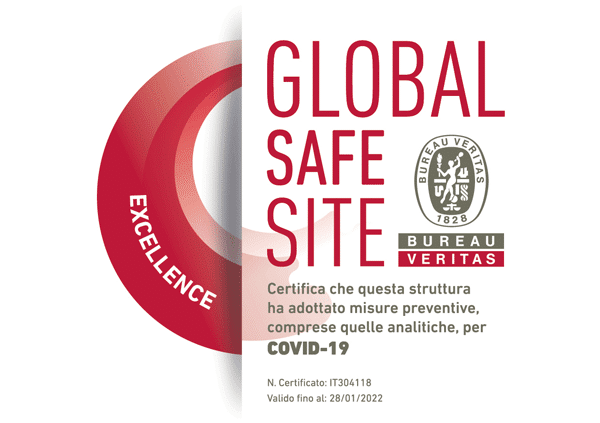In mild myopia, the eye is healthy, there are no structural alterations. However, in severe myopia, the retina will often have been damaged and even with appropriate lenses, sight will have dropped to levels lower than normal.
Severe or pathological myopia
Myopia is without a doubt the most common sight defect. In Europe, tens of millions of people are affected; in Italy alone, there are approximately twelve million. Myopia is a sight imperfection that reduces distance vision; a person affected by myopia has excellent near vision but the images of objects positioned just a few meters away will be blurred.
In structural terms, the eye affected by severe myopia is longer than normal. The progressive elongation of the eyeball may continue throughout the person’s life; this may lead to degenerative alterations that can modify almost all of the eye’s structures, with the retina being most affected.
These structural alterations can lead to a significant reduction in visual acuity and sight quality: in severe myopia, even with suitable lenses, sight will often have dropped to levels lower than normal (sometimes 7/10, sometimes 3/10 and even less than 1/10 in some cases).
The longer the eye, the greater the myopia and a higher number of diopters of myopia. The diopters also indicate the ‘thickness’ of the spectacles or lenses needed to correct the visual defect.
Severe myopia can be corrected with spectacles or contact lenses and also with the implantation of an artificial lens as opposed to being subjected to a laser treatment.
Different types of myopia
| MILD OR MODERATE MYOPIA | SEVERE OR PATHOLOGICAL MYOPIA |
|---|---|
| The patient will use lightweight spectacles with thin lenses (between 1 and 3-4 diopters for mild myopia and between 4 and 7 diopters for the moderate condition) | The spectacles are heavy and the lenses are thick on the outside and thin in the center (lenses of strength in excess of 7-8 diopters) |
| The myopia will tend to stabilize when the patient’s physical development is complete | The myopia tends to increase throughout the person’s life and sight will deteriorate in an irregular manner |
| The shape and dimensions of the eye are normal (the length varies between 22 and 24 mm) | The eye is longer and tends to protrude (the length varies between 24 and 36 mm) |
| The eye is healthy and the appearance of all of its components are normal | The eye can be described as ‘pathological’; almost all of the structures have been altered, there is damage to the retina and the optic nerve, cataracts will tend to appear much more precociously and more frequently than in non-myopic eyes. Irritating floaters will be perceived in the vitreous |
| With lenses, sight will usually be normal (10/10, 9/10 or 8/10) | Sight will be reduced even when lenses are used, depending on the greater or lesser severity of the eye’s myopic alterations (7/10 or 6/10, o or less) |
| In the majority of cases, treatments with excimer laser ( (PRK or LASIK) will eliminate myopia. Visual acuity without spectacles will be similar to the previous values with spectacles or contact lenses | With severe myopia, the best technique for correcting the defect is the implantation of an artificial crystalline. The degree of visual acuity without spectacles will be similar to the previous values with spectacles or contact lenses |
How can severe myopia be corrected
Laser treatment is not recommended in patients affected by severe myopia. Laser surgery is ideal for treating mild or moderate myopia.
In the case of severe defects, the surgeon should resort to implanting an artificial crystalline lens.
When can the patient be operated?
The expert eye doctor will be responsible for recommending the most appropriate technique to the patient; the decision will be based on the type of eye, the patient’s age, the sight requirements, the surgical experience of the individual surgeon and the instruments available.


